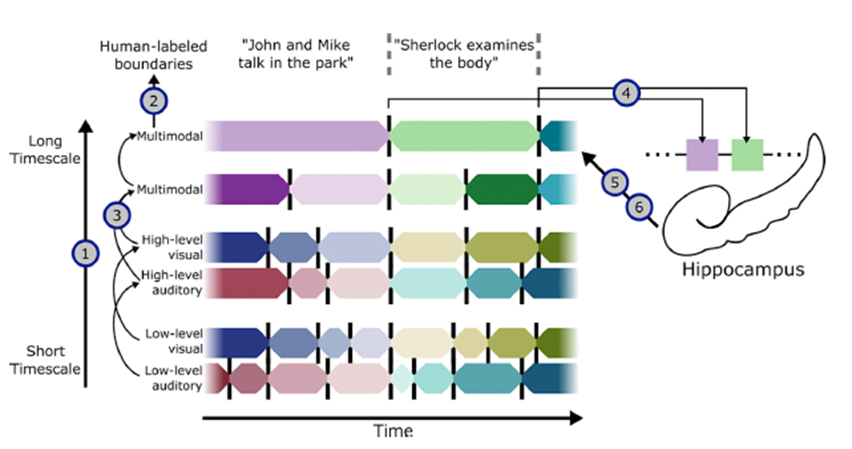Thread by Warrick Roseboom
- Tweet
- Nov 4, 2022
- #Neuroscience
Thread
Interested in the intersection of time perception and episodic memory? See our new paper led by @langestroop comparing model-based, data-driven (from EEG), and human event boundaries for naturalistic videos psyarxiv.com/t6fkg/ Short thread 1/9
@langestroop 2/9 Event segmentation may provide a basis for episodic memory. Previous work suggests that event boundaries are reflected in shifts in stable patterns of neural activity across processing hierarchies e.g. doi.org/10.1016/j.neuron.2017.06.041 by @ChrisBaldassano et al
3/9 From a different direction, recent work to model human time perception is based on identifying event boundaries and using them as the basis for time estimation. See www.nature.com/articles/s41467-018-08194-7
4/9 This work was extended by @zfountas to a model of episodic memory that also did time perception. Event boundaries were the scaffold of memory episodes and also time estimation, and were based on moments of surprise within the network doi.org/10.1162/neco_a_01514
5/9 In our new paper we ask if event boundaries from this model architecture are sufficiently human-like that you might mistake them with a human observer giving boundaries for the same natural videos. With different distance measures and inferential processes, we find they are
6/9 We also compared event boundaries from EEG recordings using the GSBS method by @linda_geerligs and colleagues, from participants watching the same natural videos, with human provided boundaries using the same distance measures & inferential processes and found similar results
7/9 Both methods worked well and would be confused with a human rater in most instances. Some small differences by the type of scene being considered… Both outperformed a series of “random raters” that produced systematic event boundaries, but unrelated to the video content
8/9 These results support a (re)consolidation of time perception and episodic memory fields through the common unit of event boundaries. Boundaries obtained by model-based or data-driven (from neuroimaging) methods do a good job of reproducing behaviour of typical human raters.
9/9 Work led by @langestroop, with @LionelBarnett2 and @zfountas. Check out the paper here: psyarxiv.com/t6fkg/




